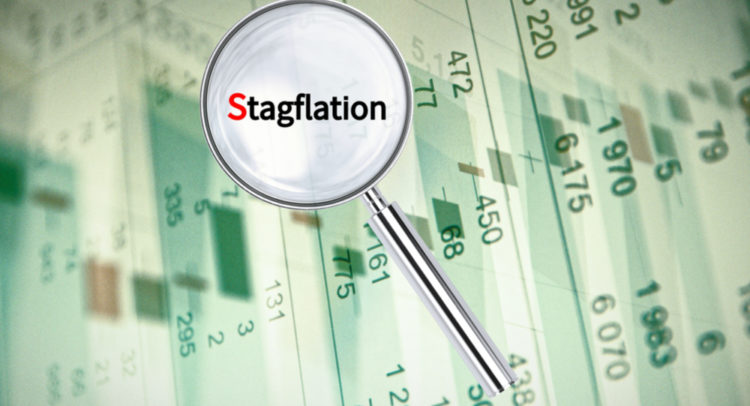The U.S. economy grew at a moderate rate in the third quarter of 2021, as inflation remained elevated, according to an updated U.S. Bureau of Economic Analysis (BEA) report released on Wednesday morning.
Real Gross Domestic Product (GDP), a measure of the market value of the nation’s output during a calendar year, rose at an annual rate of 2.3% in the third quarter of 2021, slightly above an estimate released a month ago, but well below the 6.7% increase in the second quarter.
Meanwhile, Personal Consumption Expenditures Prices (PCE), a measure of consumer inflation in the U.S., increased at an annual rate of 5.3% in Q3 2021, in line with expectations and below the 6.5% jump in Q2.
U.S. Economy Is Heading into Stagflation
When taken together, the two reports make a strong case for stagflation. That’s a situation of an economic slowdown coupled with elevated inflation.
A further examination of BEA’s GDP report identifies the source of the problem.
Here’s a quote from the BEA report:
“The increase in third-quarter GDP reflected the continued economic impact of the COVID-19 pandemic. A resurgence of COVID-19 cases resulted in new restrictions and delays in the reopening of establishments in some parts of the country. Government assistance payments in the form of forgivable loans to businesses, grants to state and local governments, and social benefits to households all decreased.”
For instance, real disposable personal income (DPI) — personal income adjusted for taxes and inflation — dropped by 5.6% in the third quarter, following a 30.2% drop in the second quarter, as an anemic labor market didn’t help households make up the lost benefits.
The elevated PCE inflation is caused by global supply chain bottlenecks and labor market frictions, which create shortages of materials and labor, pushing production costs higher. Then, companies pass these costs on to consumers, as indicated in several recent economic reports, including Federal Express last week.
Stagflation is nothing new in the U.S. economy. It happened in the 1980s, when a sharp increase in raw and energy materials pushed the economy into a situation of high inflation combined with a recession.
Stagflation Complicates the Job of the Fed
Stagflation is a complex problem for central banks, as they must deal with two problems rather than one: economic stagnation and inflation.
Their conventional and nonconventional policies cannot deal with both problems simultaneously, meaning policymakers face the dilemma of which issue to address first.
At this point, the Federal Reserve has chosen to deal with inflation, which stands at the highest level since the 1980s. It has already announced that it will begin tapering in January of 2022, the rolling back of the bond purchase program (nonconventional policy), followed by three interest rate hikes (conventional approach). This could change if stagnation turns into a more severe problem than inflation.
Meanwhile, Wall Street is watching as 2021 comes to an end, often confused about the economy’s direction and monetary policy. Thus, the sharp swings from one day to the other we have seen recently as we head into the market holidays.
Disclosure: At the time of publication, Panos Moudoukoutas owned shares of Nike and Applied Materials.
Disclaimer: The information contained in this article represents the views and opinion of the writer only, and not the views or opinion of TipRanks or its affiliates Read full disclaimer >
















